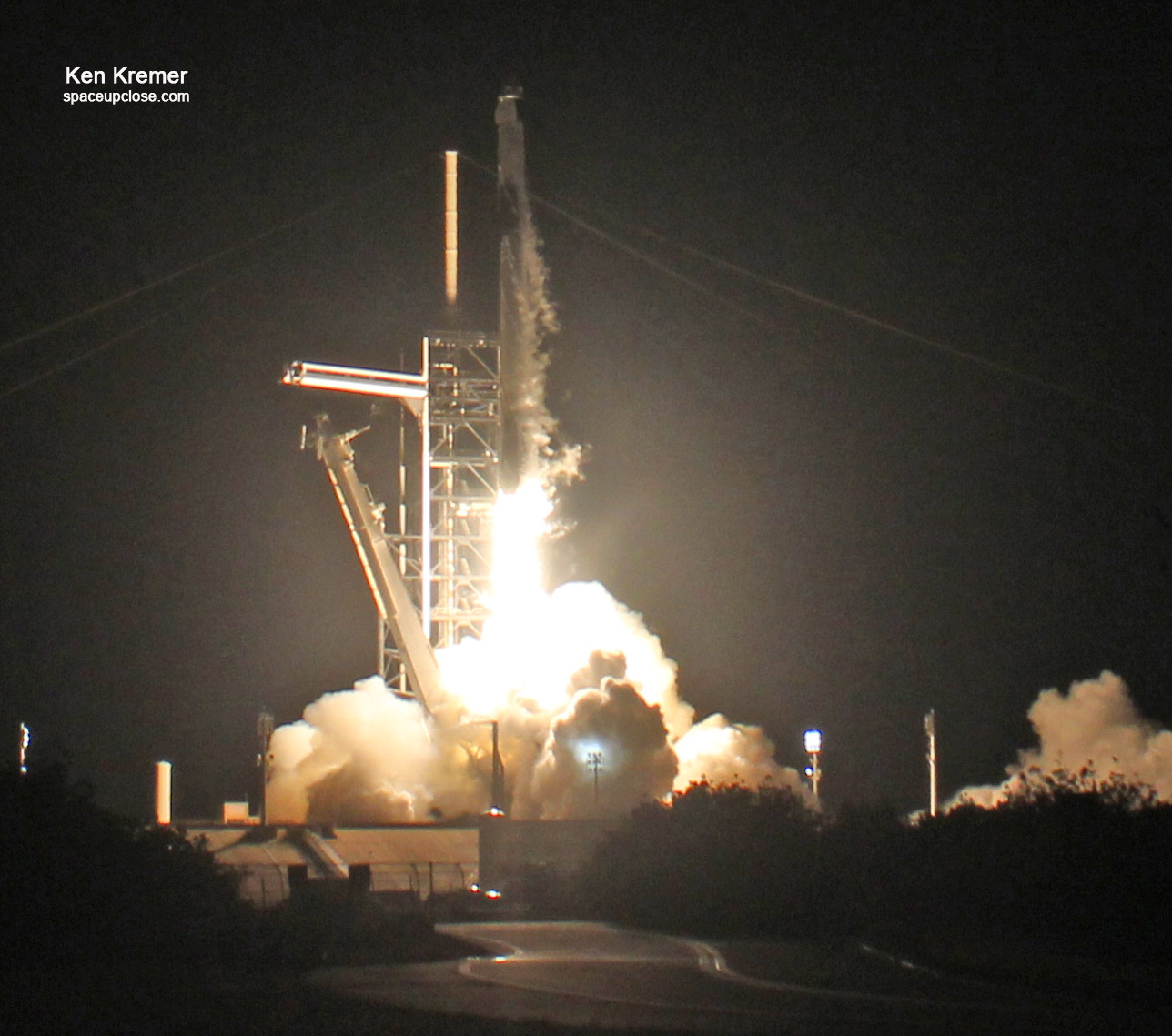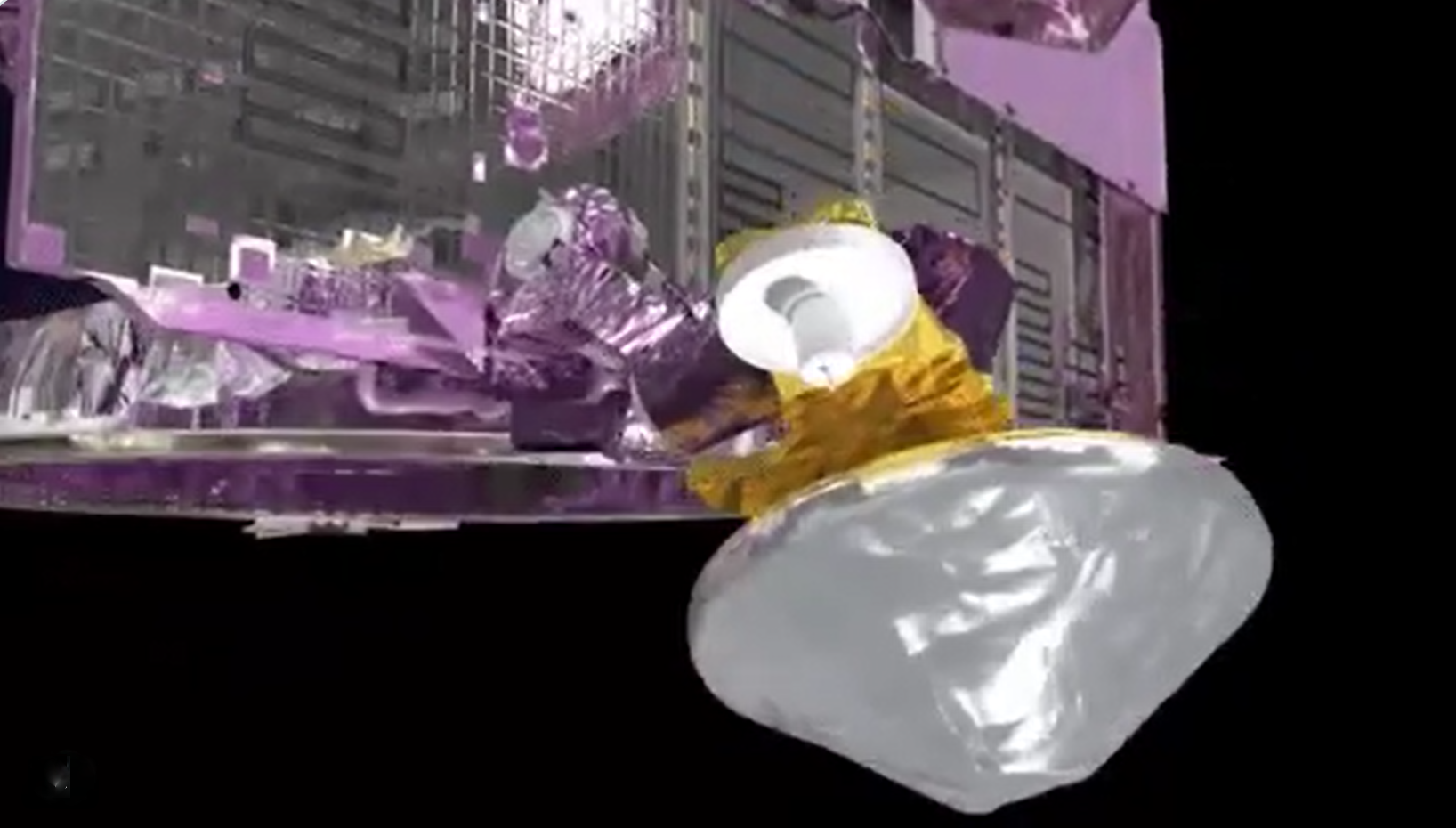
For SpaceUpClose.com & RocketSTEM
CAPE CANAVERAL, FL – NASA’s mammoth James Webb Space Telescope (JWST) has successfully deployed its high data rate antenna critical for transmitting the huge volumes to be collected by the observatory and also carried out its first two mid-course correction burns placing it on course for the voyage to its final operational destination at a unique orbital perch at the L2 Lagrange point a million miles (1.5 million km) from Earth.
These initial key milestones were achieved following Webb’s Christmas morning launch, Saturday, Dec. 25, from the Guiana Space Center in South America on a robotic mission as a cosmic time machine peering back to nearly the beginning of time to see first light and explore the formation of the first stars and galaxies in our Universe.
Much blood, sweat and tears have been expended to get Webb to the launch pad and into space to this point now well over two decades in the making.
This first post launch milestone after deploying the solar array involved firing Webb’s main thrusters to carry out the first of three mid-course correction maneuvers, dubbed Mid Course Correction 1a, or MCC 1a.
The firing took place on Christmas evening at about 7:50 p.m. EST about 12 and a half hours after the Christmas morning launch and lasted 65 minutes.
Most of the energy required to get the 13,700 lbs (6200 kg), Webb observatory to L2 was provided by the Arianespace Ariane 5 rocket at launch.
“On Dec. 25, the Webb team successfully executed the first of three planned orbit corrections to get Webb into its halo orbit around the second Lagrange point, L2,” NASA confirmed.
And the team intentionally programmed a slight under-burn from the Ariane-5 that launched it into space, because it’s not possible to correct for overthrust.
“If Webb gets too much thrust, it can’t turn around to move back toward Earth because that would directly expose its telescope optics and structure to the Sun, overheating them and aborting the science mission before it can even begin.”
“Therefore, we ease up to the correct velocity in three stages, being careful never to deliver too much thrust.”
Altogether there will be three mid-course correction maneuvers.
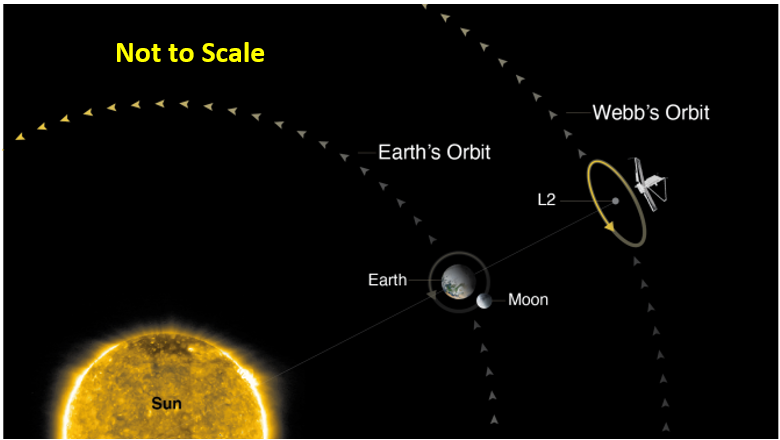
“In sending the Webb Observatory into its orbit around the Sun-Earth L2 point, the vast majority of the energy required was provided by the Ariane 5 rocket. After release of the observatory from the rocket, several small tweaks to the trajectory are planned, to ease the observatory into its operating orbit about one month after launch,” wrote Randy Kimble, the Webb Integration, Test, and Commissioning Project Scientist, at NASA Goddard, in a blog post.
After this burn, no key milestones are time critical, so the order, location, timing, and duration of deployments may change, NASA officials explained.
“The largest and most important mid-course correction (MCC), designated MCC-1a, has already been successfully executed as planned, beginning 12.5 hours after launch. This time was chosen because the earlier the course correction is made, the less propellant it requires. This leaves as much remaining fuel as possible for Webb’s ordinary operations over its lifetime: station-keeping (small adjustments to keep Webb in its desired orbit) and momentum unloading (to counteract the effects of solar radiation pressure on the huge sunshield).
The burn wasn’t scheduled immediately after launch to give time for the flight dynamics team to receive tracking data from three ground stations, widely separated over the surface of the Earth, thus providing high accuracy for their determination of Webb’s position and velocity, necessary to determine the precise parameters for the correction burn. Ground stations in Malindi Kenya, Canberra Australia, and Madrid Spain provided the necessary ranging data. There was also time to do a test firing of the required thruster before executing the actual burn. We are currently doing the analysis to determine just how much more correction of Webb’s trajectory will be needed, and how much fuel will be left, but we already know that the Ariane 5’s placement of Webb was better than requirements.
One interesting aspect of the Webb launch and the Mid-Course Corrections is that we always “aim a little bit low.” The L2 point and Webb’s loose orbit around it are only semi-stable. In the radial direction (along the Sun-Earth line), there is an equilibrium point where in principle it would take no thrust to remain in position; however, that point is not stable. If Webb drifted a little bit toward Earth, it would continue (in the absence of corrective thrust) to drift ever closer; if it drifted a little bit away from Earth, it would continue to drift farther away. Webb has thrusters only on the warm, Sun-facing side of the observatory. We would not want the hot thrusters to contaminate the cold side of the observatory with unwanted heat or with rocket exhaust that could condense on the cold optics. This means the thrusters can only push Webb away from the Sun, not back toward the Sun (and Earth). We thus design the launch insertion and the MCCs to always keep us on the uphill side of the gravitational potential, we never want to go over the crest – and drift away downhill on the other side, with no ability to come back.
Therefore, the Ariane 5 launch insertion was intentionally designed to leave some velocity in the anti-Sun direction to be provided by the payload. MCC-1a similarly was executed to take out most, but not all, of the total required correction (to be sure that this burn also would not overshoot). In the same way, MCC-1b, scheduled for 2.5 days after launch, and MCC-2, scheduled for about 29 days after launch (but neither time-critical), and the station-keeping burns throughout the mission lifetime will always thrust just enough to leave us a little bit shy of the crest. We want Sisyphus to keep rolling this rock up the gentle slope near the top of the hill – we never want it to roll over the crest and get away from him. The Webb team’s job, guided by the Flight Dynamics Facility at NASA Goddard, is to make sure it doesn’t.”
Next up was release of the gimbaled antenna assembly, or GAA.
Starting around 10 a.m. EST on Dec. 26, the Webb team began the process of releasing the gimbaled antenna assembly, or GAA, which includes Webb’s high-data-rate dish antenna. It took about an hour to release and test the motion of the antenna.
📞 Hello Webb? It's us, Earth!
Our team just deployed the gimbaled antenna assembly, which includes Webb’s high-data-rate dish antenna. This antenna will be used to send at least 28.6 Gbytes of data down from the observatory, twice a day: https://t.co/4vKcbjbKJO pic.twitter.com/zFjhF3yLzY
— NASA Webb Telescope (@NASAWebb) December 26, 2021
This antenna will be used to send at least 28.6 Gbytes of science data down from the observatory, twice a day.
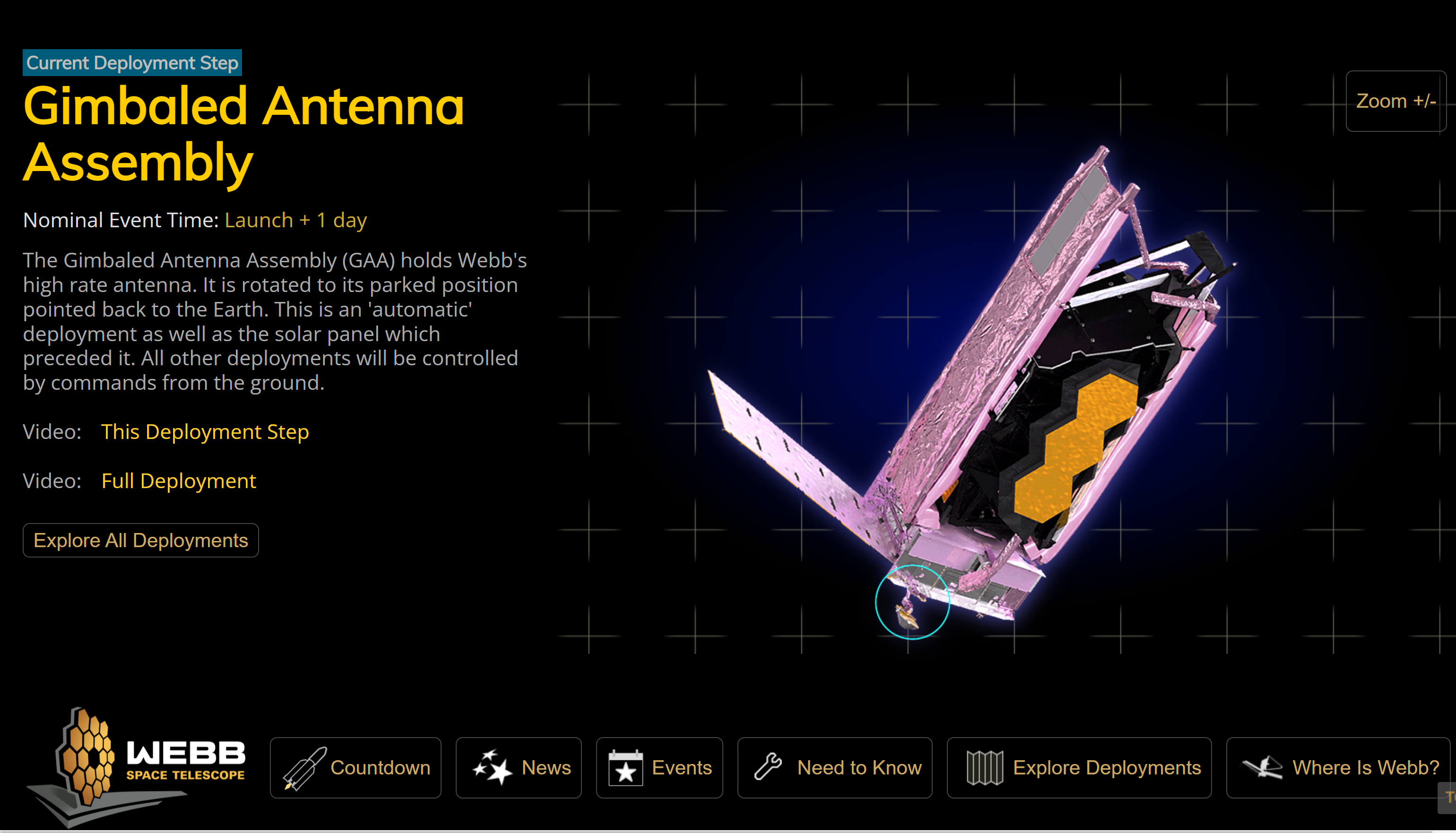
NASA also reported that the temperature sensors and strain gauges on the telescope were activated for the first time thereafter overnight.
“Temperature and strain data are now available to engineers monitoring Webb’s thermal and structural systems.”
Webb was over 185,000 miles from Earth at the time of the deployment and 20% of the way to L2.
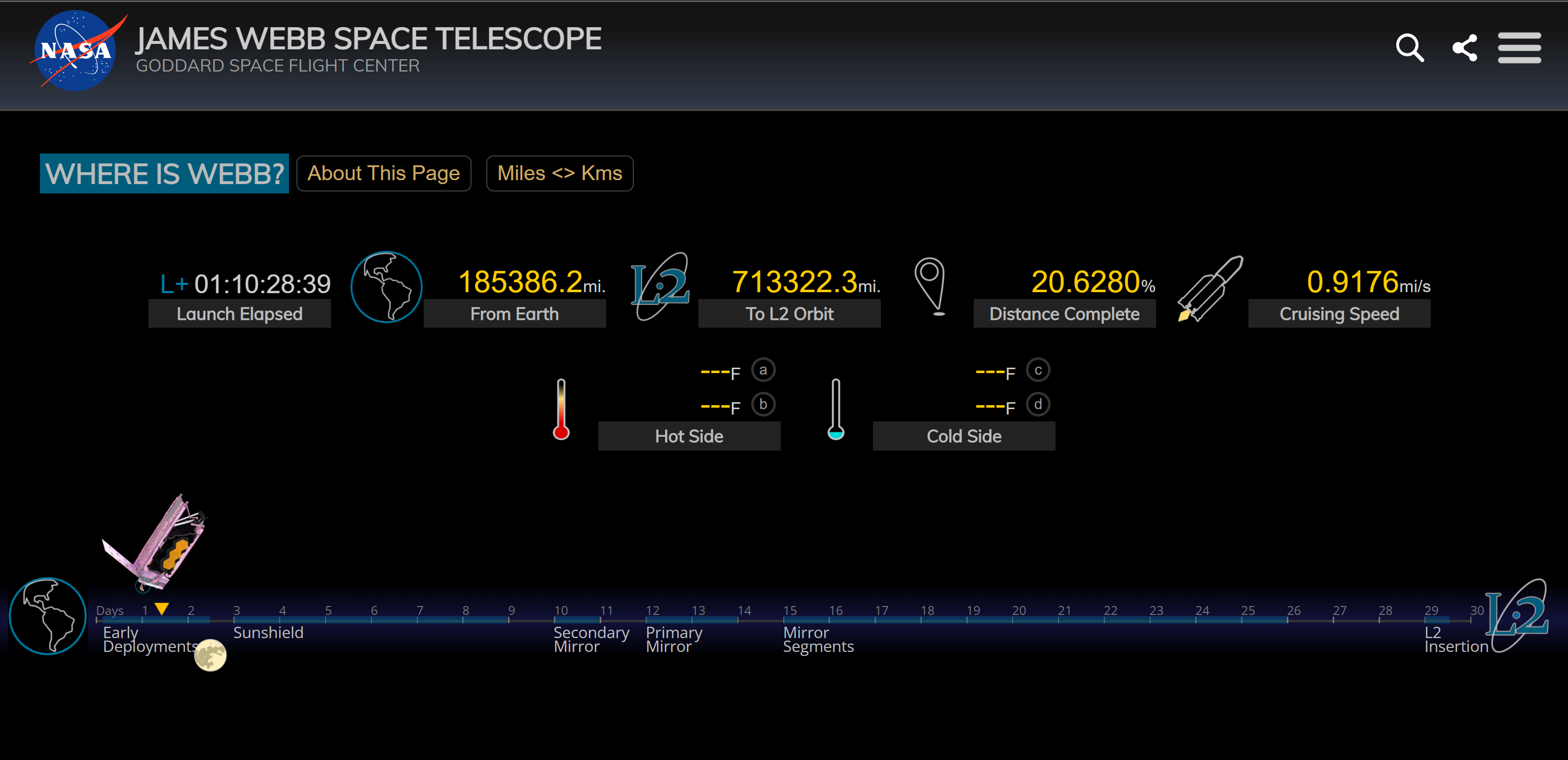
The second mid-course correction burn was started at 7:20 pm EST, Dec. 27 – 60 hours after liftoff and lasted 9 minutes and 27 seconds and successfully completed.
The giant school bus sized and nearly 6.8-ton (6.2-metric ton) infrared observatory has huge ambitions – despite being billions over budget and years behind schedule and faced down cancellation from short-sighted budget cutters in Congress.
It seeks to ask and answer the big questions – Who we are? How did we come to be? by looking back to the birth of the Universe
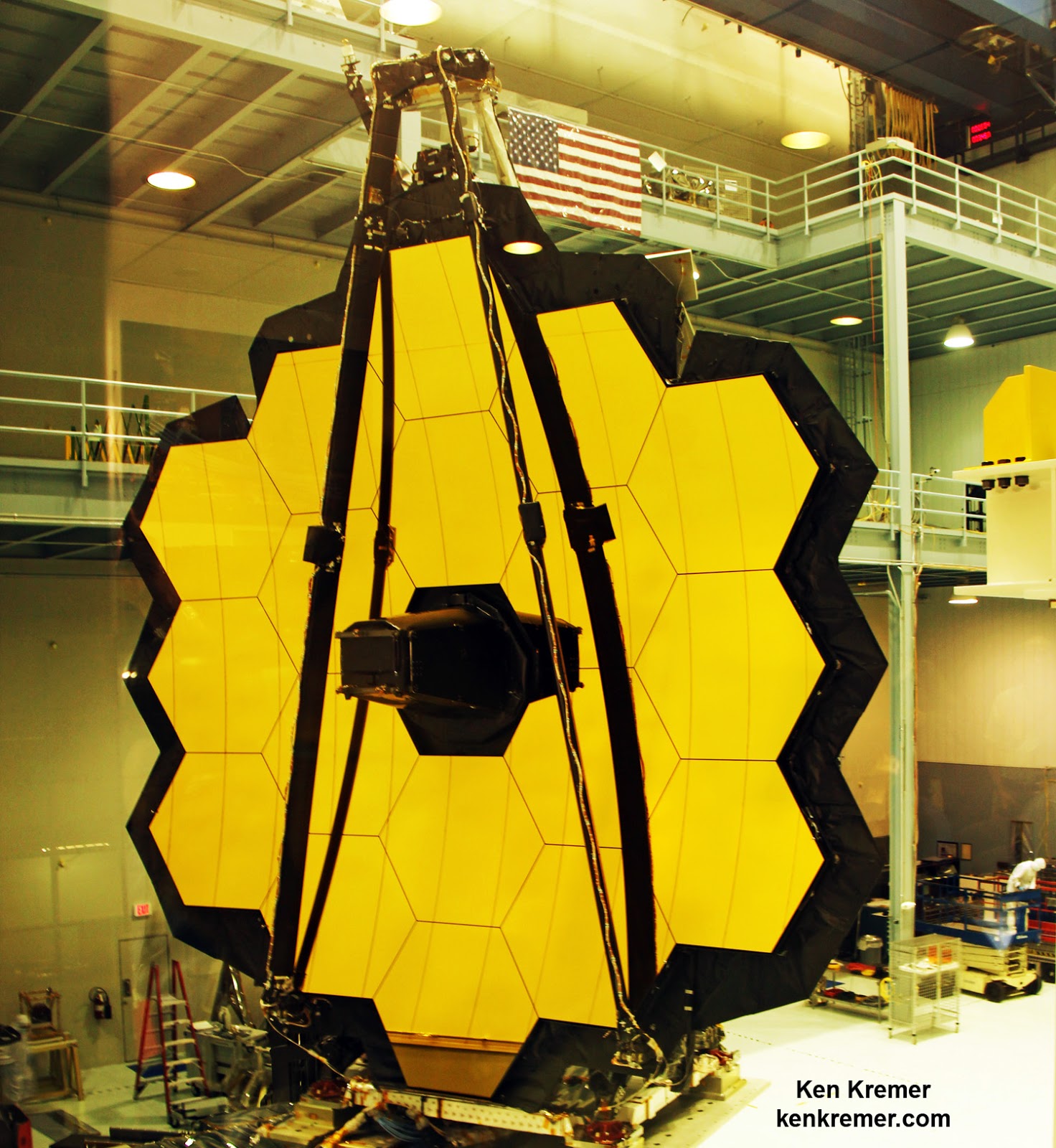
The $9.8 Billion Webb observatory – intricately folded up like origami inside the nose cone – launched at 7:20 a.m. EST (9:20 a.m. GFT / 1220 GMT / 13:20 CET). Saturday, Dec. 25, on a 55 m (180 ft) tall Arianespace Ariane 5 rocket from Europe’s jungle Spaceport at the ELA-3 launch complex in Kourou, French Guiana, on the northeastern coast of South America.
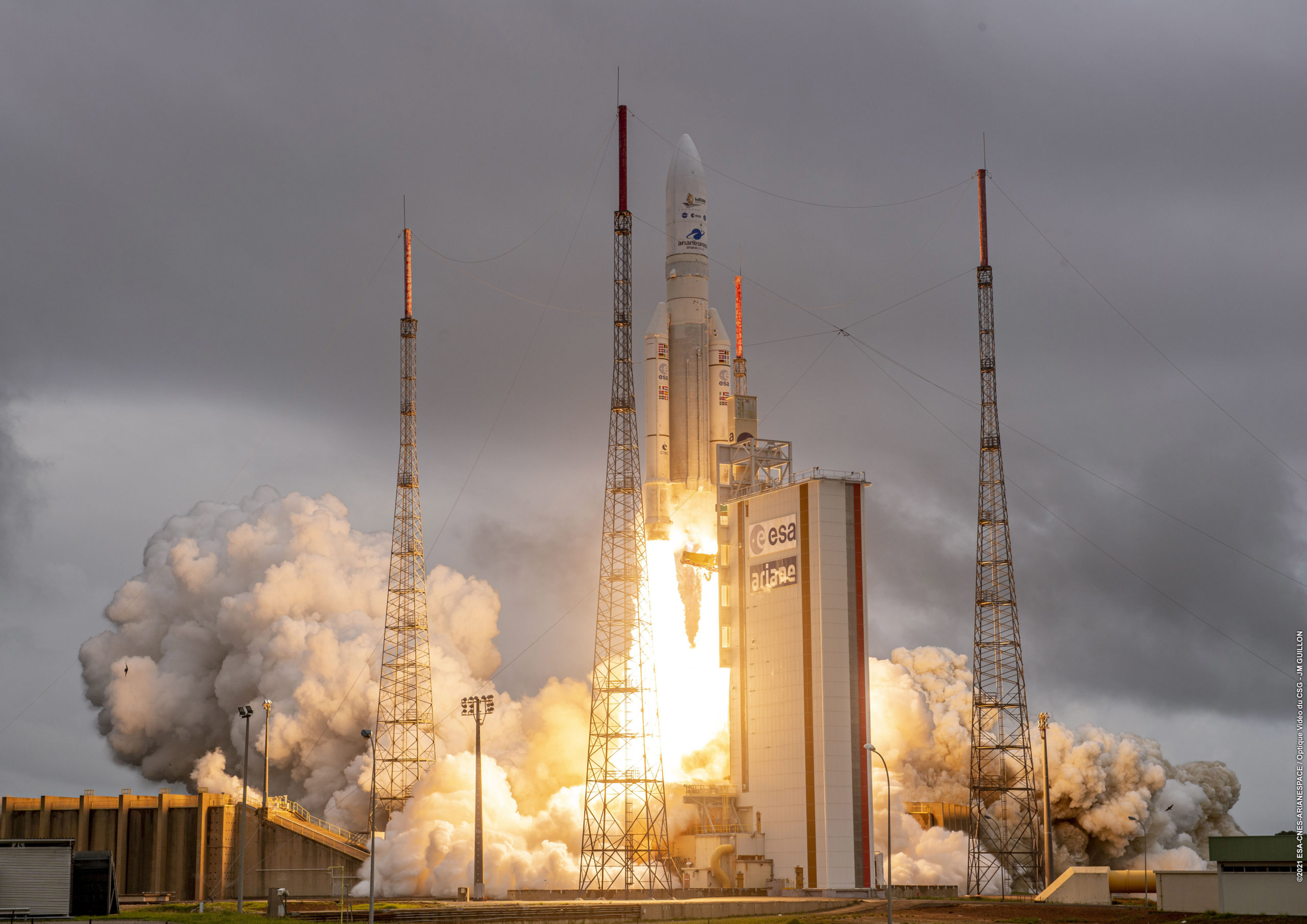
The next steps critical steps are deployment of the complex sunshield system.
Webb is joint effort between NASA, ESA (European Space Agency) and CSA (Canadian Space Agency).
JWST is the largest, most powerful and most complex space telescope ever built.
It is also the most expensive science instrument ever costing nearly $10 Billion
It will operate in a halo orbit at the L2 Lagrange point approx. 1 million miles (1.6 million km) from Earth after liftoff and about a 1-month journey.
It will serve as the scientific successor to NASA’s world famous and phenomenally successful Hubble Space Telescope (HST).
“The James Webb Space Telescope represents the ambition that NASA and our partners maintain to propel us forward into the future,” said NASA Administrator Bill Nelson.
“The promise of Webb is not what we know we will discover; it’s what we don’t yet understand or can’t yet fathom about our universe. I can’t wait to see what it uncovers!”
Webb is in many respects a time machine looking back to the formation of the Universe over 13.5 Billion years ago and how we came to be and evolve over the eons.
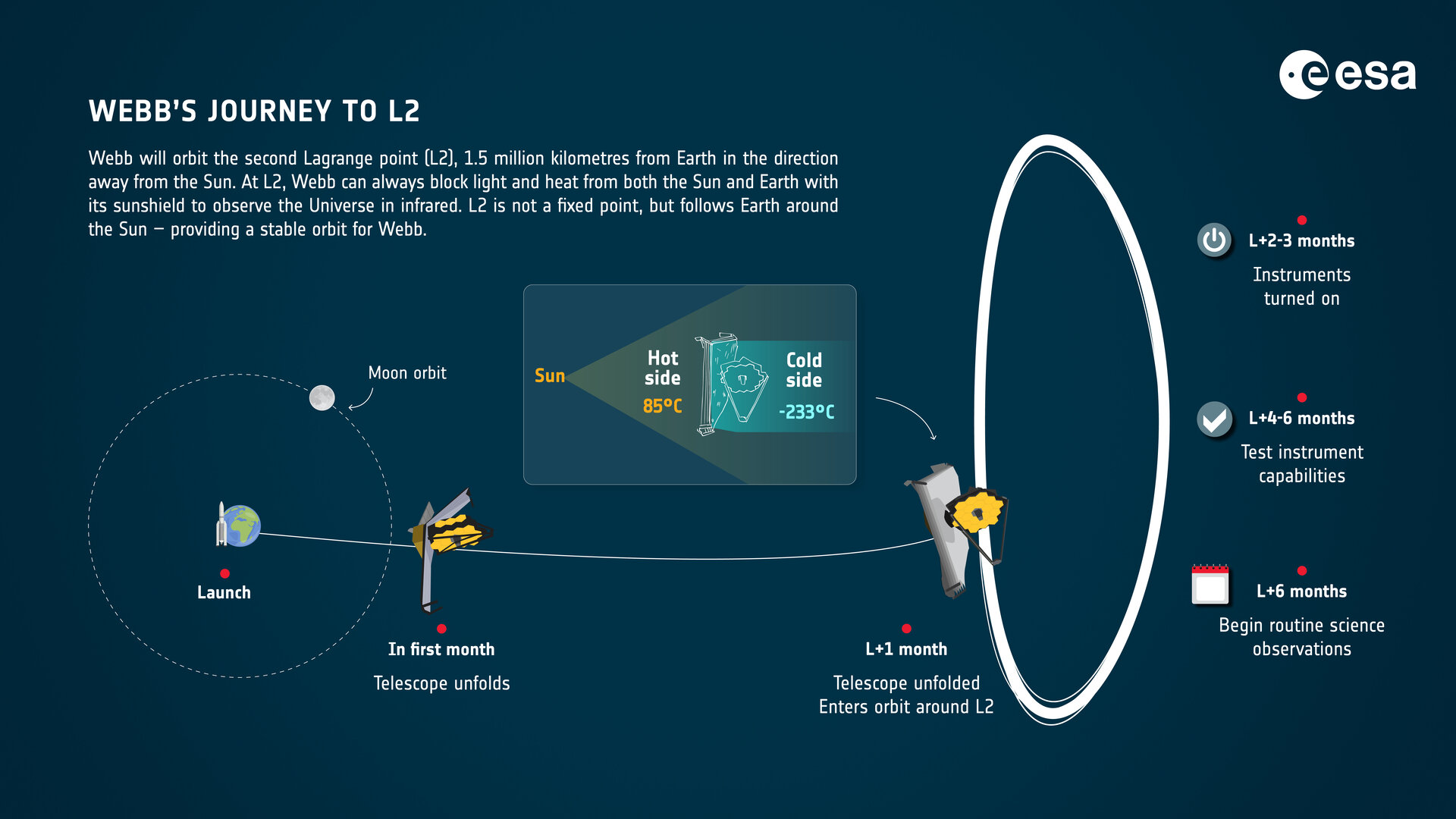
Watch this space for my ongoing reports on JWST mission and science.
Watch Ken’s continuing reports about JWST, IXPE, DART, SpaceX Crew and Cargo Dragons, Artemis, SLS, Orion and NASA missions, Lucy Asteroid mission, SpaceX Starlink, Blue Origin and Space Tourism, Commercial Crew and Starliner and Crew Dragon and onsite for live reporting of upcoming and recent SpaceX and ULA launches including Crew 1 & 2 & 3, ISS, Solar Orbiter, Mars 2020 Perseverance and Curiosity rovers, NRO spysats and national security missions and more at the Kennedy Space Center and Cape Canaveral Space Force Station.
Stay tuned here for Ken’s continuing Earth and Planetary science and human spaceflight news: www.kenkremer.com –www.spaceupclose.com – twitter @ken_kremer – email: ken at kenkremer.com
Dr. Kremer is a research scientist and journalist based in the KSC area, active in outreach and interviewed regularly on TV and radio about space topics.
………….
Ken’s photos are for sale and he is available for lectures and outreach events
Please consider supporting Ken’s work by purchasing his photos and/or donating at Patreon:
https://www.patreon.com/kenkremer
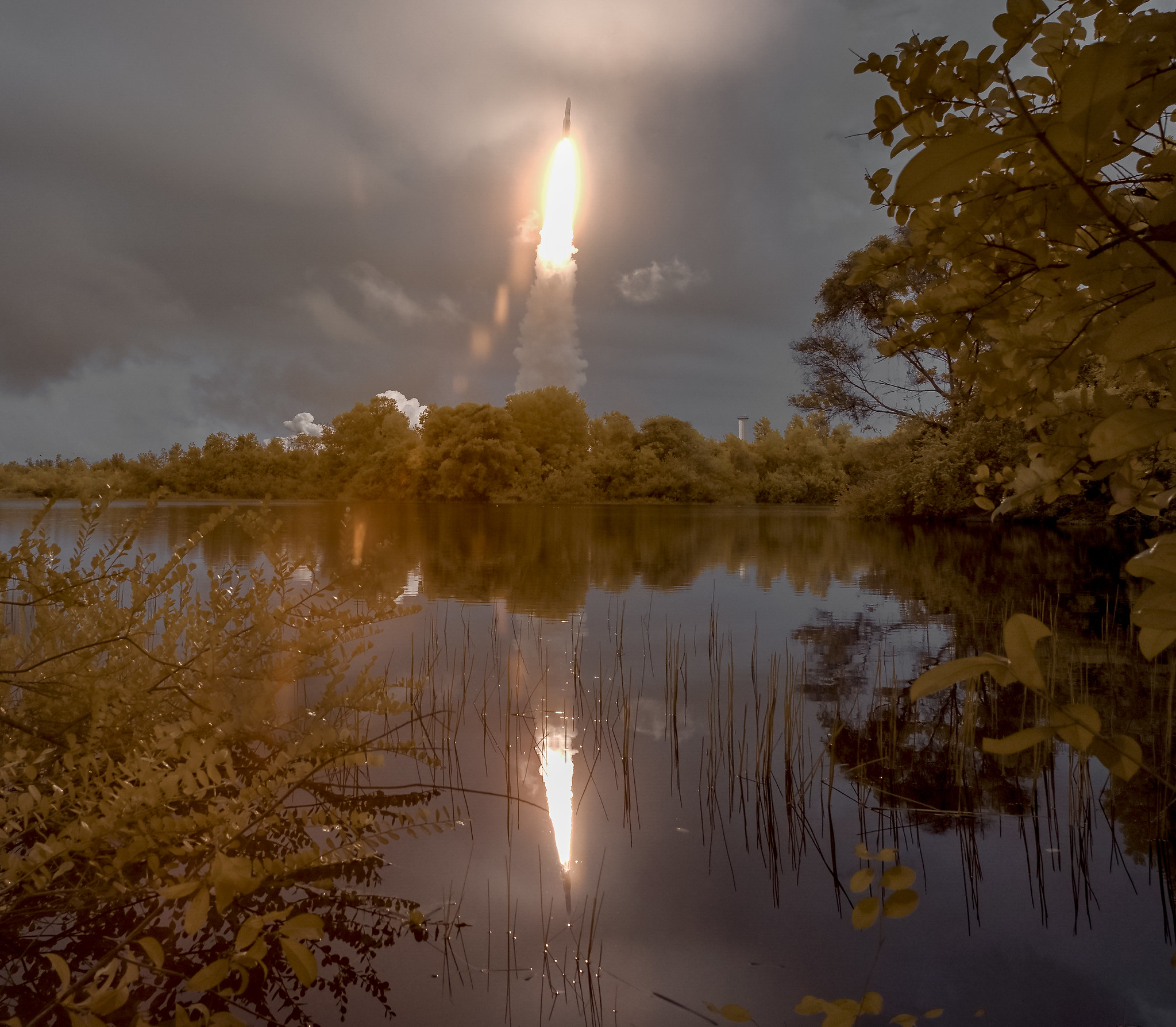
x


